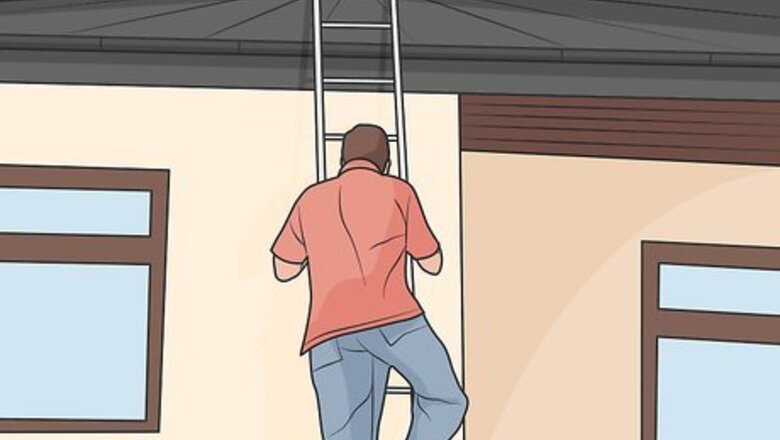
views
Single-Flue Chimney
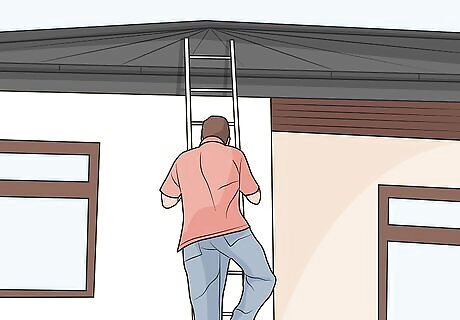
Get onto your roof with a ladder. Use a ladder that extends at least 3 feet (0.91 m) above your roof so you can safely climb on top of it. Put the ladder’s feet on steady, level ground and lean the ladder against your home. For every 4 feet (1.2 m) of height, move the feet of the ladder away from your home by 1 foot (30 cm). Always keep 3 points of contact on the ladder as you climb so you’re less likely to slip and fall. For example, if your ladder is 16 feet (4.9 m) tall, then you will set the bottom of the ladder 4 feet (1.2 m) away from your home. Never stand on the top step of a ladder since you could easily lose your balance.Tip: If you have a steep roof that’s not easy to stand on, wear a roof safety harness so you don’t slip and fall.
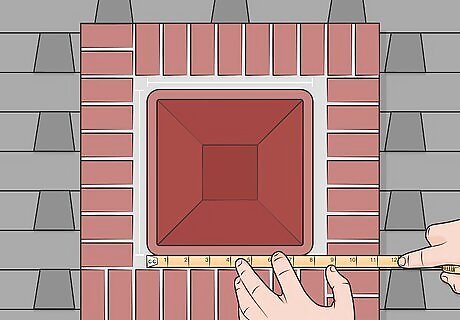
Measure the length and width of the flue on your chimney. Find the flue on your chimney, which is the clay or metal tube that extends out from the top of your chimney. Use a tape measure to find the length of the flue on the longest side. Then find the width at the widest point. Write down your measurements so you don’t forget them. If you have a circular flue, then find the diameter instead of the length and width. If your chimney has multiple flues, a flue level with the top of the chimney, or one with an oval shape, then you need to use a top-mount cap instead.
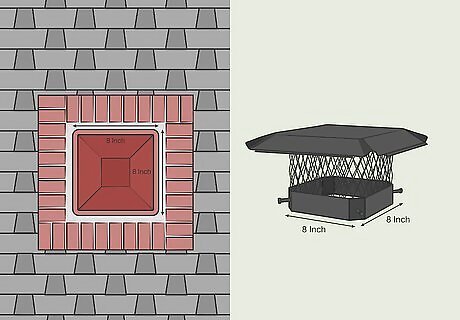
Buy a cap that has the same length and width as your chimney’s flue. You can find chimney caps at hardware and roofing supply stores, or you may order one online. Check the packaging or item description for the measurements to ensure it will work for your chimney. Choose a flue made out of galvanized steel if you can since it will offer the most protection. It’s okay if the cap dimensions are ⁄2–1 inch (1.3–2.5 cm) larger than the flue, but avoid getting anything larger or it won’t fit properly.
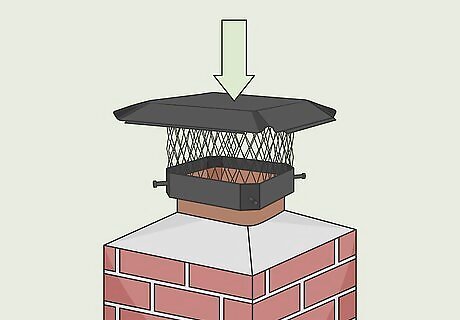
Slide the cap over the top of the flue. Single-flue caps are the easiest to mount since they sit right on top of the flue. Align the open bottom of the cap with the top of your chimney flue. Slowly lower the cap onto the flue and push it down as far as it will go. Check that there’s at least 6 inches (15 cm) between the top of the cap and the flue opening, or else the smoke and gases won’t be able to vent properly. Typically, your cap will have a rim around the bottom so you don’t place it too low on the flue. Some circular chimney caps fit inside of the flue rather than around the outside. Push the cap inside of the flue until it feels tight against the sides.

Secure the chimney cap’s screws to the flue. Your chimney cap will come with self-tapping screws so you don’t need to drill any pilot holes. Feed the screws through each of the holes in the corners or sides of the cap and turn them clockwise by hand until they dig into the flue. Then use a screwdriver to keep tightening the screws until the cap doesn’t move or shift. After that, you’re finished! If you have a circular cap, there may be a circular clamp that wraps around the outside. Tighten the screw on the clamp until the clamp fits securely onto the flue.
Multi-Flue Chimney
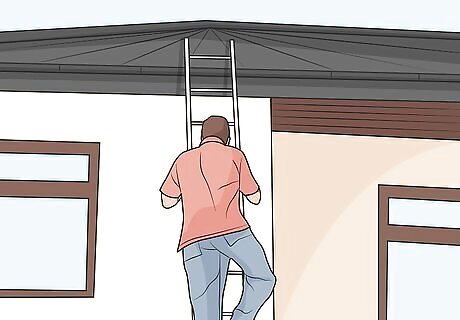
Climb onto your roof using a ladder. Pick a ladder that extends 3 feet (0.91 m) above the edge of your roof so it’s safe to climb. Set the ladder’s feet on level ground so they’re ¼ of the height away from your home. As you climb up, only move 1 hand or leg at a time so you maintain 3 points of contact with the ladder. For example, if the edge of your roof is 20 feet (6.1 m) high, then put the base of the ladder 5 feet (1.5 m) away from your home. Use a roofing safety harness that’s braced to the roof’s peak or chimney if you have a steep roof that’s difficult to walk on.
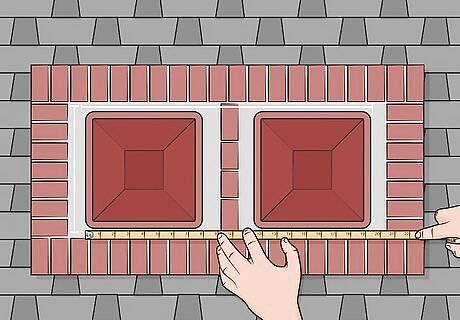
Take measurements for the length, width, and height of the chimney’s flues. Place the end of your tape measure against the side of the flue, which is the clay or metal tube coming out from the top of your chimney. Extend the tape measure to find the total combined length of all the flues. Then measure across your flues to find the widest point. Look for the tallest flue on your chimney and take the height measurement. Write down all of your dimensions so you don’t forget them. Even though you aren’t mounting the cap directly to the flue, you’ll have to get one that’s large enough to completely cover them.

Find the length and width of your chimney’s crown. The crown is the concrete slab on top of your chimney. Place your tape measure along the longest edge of the crown to find its length. Then measure the crown at the widest point. Write down your measurements so you can reference them later on. The size of the crown is the maximum size you can use for your cap so it fits on the chimney properly.
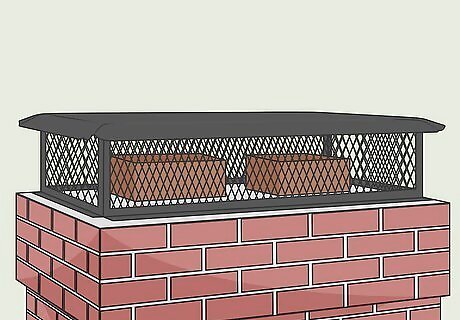
Get a chimney cap taller than the highest flue and the same size as the crown. Search for a top-mount cap at a roofing supply or hardware store. Make sure the dimensions are large enough to cover all of the flues but not any larger than the size of the crown. Check the height measurement on the packaging and make sure it’s at least 5 inches (13 cm) taller than the flue, or else your chimney can’t vent properly. If you can’t find a cap that fits on your chimney crown, you may need to custom-order one.
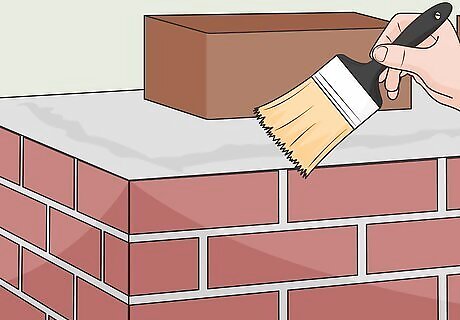
Brush off any debris that’s on the crown. Bring a stiff-bristled brush up on your roof and use it to wipe off the crown. Focus on areas that have loose mortar, old adhesive, and animal waste so you have a clean mounting surface. Try to get the crown as clean and smooth as possible before your installation.

Drill 1–2 pilot holes per side into the crown with a masonry bit. Position your cap on top of your chimney so the bottom edges are flush with the sides of the crown. Locate the holes running along the bottom flange of the cap so you know where to position the pilot holes. Install a masonry bit on your drill that’s about ⁄8 inch (0.32 cm) smaller in diameter than the screws that came with the cap. Drill through the cap’s holes and into the crown so you can easily start your screws. If you don’t drill pilot holes, you could crack or damage the crown when you install the cap.Variation: Some caps fit over the edge of the crown, so the pilot holes may be on the side instead of on top.
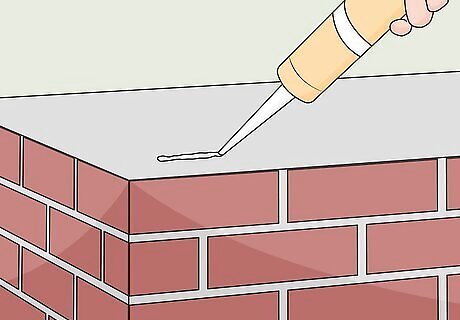
Apply a line of caulk around the edge of the crown to seal it. Place the tip of the caulk along the outer edge of your crown and slightly squeeze the trigger. Make a wavy line of caulk that’s about 1 inch (2.5 cm) wide along the entire edge. Work your way around the entire crown to seal the edges so water is less likely to get inside of the flue. You can buy caulk and a caulk gun from your local hardware store.
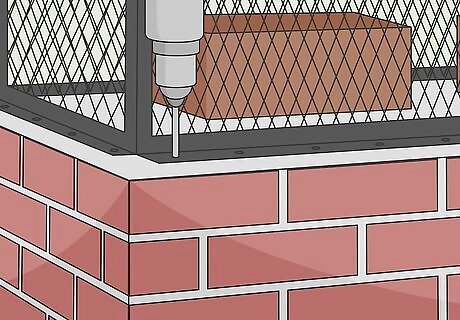
Secure the cap to the crown with the set screws. Set the cap on your chimney’s crown so it’s on top of the line of caulk you just applied. Make sure the pilot holes you drilled line up with the holes on the cap. Press the bottom flange firmly onto the caulk so it stays in place. Feed the set screws that came with your cap through the holes and tighten them clockwise with a screwdriver. Secure all of the screws until they’re flush with the crown so your cap doesn’t wobble or move around. Once you feel tension when tightening the screws, you’re finished!
















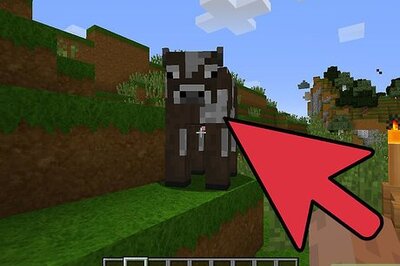

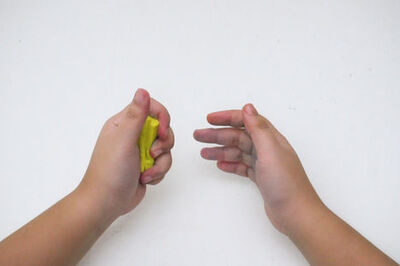

Comments
0 comment